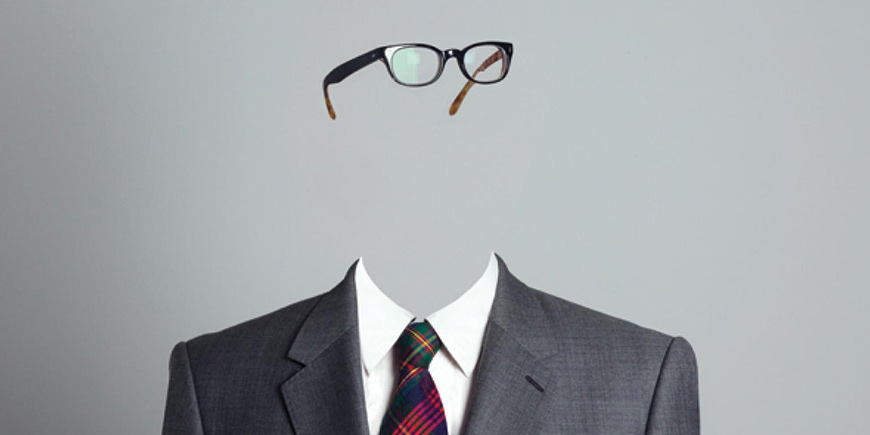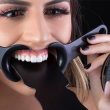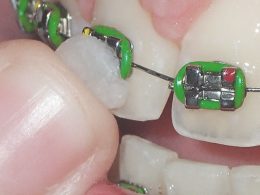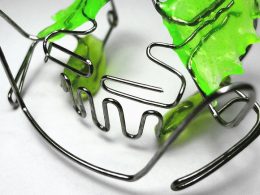Table of Contents
Adult patients seeking Orthodontic treatment are increasingly motivated by esthetic considerations. The majority of these patients reject wearing labial fixed appliances and are looking instead to more esthetic treatment options, including lingual Orthodontics and Invisalign appliances.
Since Align Technology introduced the Invisalign appliance in 1999 in an extensive public campaign, the appliance has gained tremendous attention from adult patients and dental professionals. The transparency of the Invisalign appliance enhances its esthetic appeal for those adult patients who are averse to wearing conventional labial fixed Orthodontic appliances.
Although guidelines about the types of malocclusions that this technique can treat exist, few clinical studies have assessed the effectiveness of the appliance. A few recent studies have outlined some of the limitations associated with this technique that clinicians should recognize early before choosing treatment options.
What Is the Invisalign Appliance?
The Invisalign appliance involves a series of aligners made from a transparent, thin (typically less than 1 mm) plastic material formed with CAD-CAM laboratory techniques. These aligners are similar to clear retainers that cover the clinical crowns and the marginal gingiva.
Each aligner is designed to move the teeth a maximum of about 0.25 to 0.3 mm over a 2-week period, and is worn in a specific sequence. The Invisalign appliance is currently recommended for adults and for adolescents with fully erupted permanent teeth who meet an acceptable standard of compliance. Excellent compliance is mandatory since the appliance has to be worn a minimum of 20 to 22 hours a day and each aligner should be worn 400 hours to be effective.
Current Technique
Fixed Orthodontic appliances have been the backbone of Orthodontic biomechanical technique. However, the reluctance to wear buccal braces because of their poor esthetic has been a driving force for the development of alternative treatment options for the adult population.
Some current treatment options include Essix retainers, Tru-Tain retainers, lingual Orthodontics and Invisalign appliances.
Because of their removable nature, Essix retainers and Tru-Tain retainers are indicated for mild non-skeletal malocclusions. Essix appliances have conventionally been used as anterior retainers from cuspid to cuspid. They are fabricated from vacuformed plastic sheets, and have a physical memory and flexibility that allows them to snap onto the anterior teeth, extending into gingival undercuts. With minor modification, Essix appliances can achieve small tooth movements, and serve as temporary bridges and bite planes.
The Invisalign appliance alone is also generally indicated for mild non-skeletal malocclusions. It was also successfully used in conjunction with segmental fixed appliances, or with full fixed appliances used immediately before and after surgery for certain skeletal Class III malocclusions.
Fixed lingual Orthodontic appliances, on the other hand, can be used for complex malocclusions. Lingual Orthodontics uses the same concept as conventional fixed braces, but with bracket placements on the lingual rather than the buccal surfaces of teeth. This approach improves the esthetic look of the appliance, but has been slow to gain popularity in North America because of insufficient training and knowledge of the technique. Its main drawbacks are associated with tongue discomfort and phonation interferences.
Indications for the Invisalign Appliance
We believe that the Invisalign appliance is most successful for treating mildly malaligned malocclusions (1 to 5 mm of crowding or spacing), deep overbite problems (like Class II division 2 malocclusions) when the overbite can be reduced by intrusion or advancement of incisors, non-skeletally constricted arches that can be expanded with limited tipping of the teeth, and mild relapse after fixed-appliance therapy.
Conditions that can be difficult to treat with an Invisalign appliance or are contra-indicated altogether include:
- Crowding and spacing over 5 mm.
- Skeletal anterior-posterior discrepancies of more than 2 mm (as measured by discrepancies in cuspid relationships).
- Centric-relation and centric-occlusion discrepancies.
- Severely rotated teeth (more than 20 degrees).
- Open bites (anterior and posterior) that need to be closed.
- Severely tipped teeth (more than 45 degrees).
- Teeth with short clinical crowns.
- Arches with multiple missing teeth.
Use of the Invisalign appliance is relatively new for Orthodontists and is still being developed. Currently, few clinical studies and case reports have assessed the effectiveness of this technique. Although Align Technology has suggested guidelines for its appropriate use, clinicians have encountered numerous limitations when using the appliance.
Clinician Involvement
Although diagnostic preparation for treatment with the Invisalign appliance is similar to that for treatment with conventional fixed Orthodontic appliances, clinicians play a more limited role during treatment with the Invisalign appliance.
Preparation includes initial assessment, diagnosis, treatment planning and completion of pretreatment records (e.g., panoramic and lateral cephalometric radiographs, bite registration, photos and polyvinyl siloxane impressions), all of which must be sent to Align Technology in California where simulated virtual treatment is formulated by proprietary 3-dimensional CAD-CAM technology.
Clinicians then download the virtual treatment set-up from the internet to evaluate the proposed final positioning of the teeth. Clinicians can request modifications at this time, but once the aligners are made, they cannot alter the appliance during the treatment. As a consequence, clinicians must prospectively formulate a precise treatment plan.
If the results are unsatisfactory, clinicians may use auxiliary appliances (e.g., fixed braces) or contact Align Technology for adjustment and fabrication of new aligners.
Compliance
Since the Invisalign appliance is removable, patient motivation is critical to achieving the desired result. For the appliance to be effective, patients must wear it at least 22 hours a day. They may remove it only when eating, when drinking hot beverages that may cause warping or staining, or beverages that contain sugar, and when brushing and flossing.
The transparency of this appliance may increase the likelihood of its being misplaced when it is removed. In many studies it has been shown that one in six patients lost their appliances, the majority of these losses were ascribable to the appliances being clear and removable. Aligners from the Invisalign appliance have very similar properties to those of Essix appliances.
Extraction Cases
Patients having premolar extractions may not be suitable candidates for treatment with the Invisalign appliance, because the appliance cannot keep the teeth upright during space closure.
Bonded restorative attachments on the buccal surfaces can assist in limited movements, but clinical results have suggested only partial effectiveness. The vast majority of Orthodontists reported excessive tipping around premolar extraction sites. They found that only 29% of those with 2 or more premolars extracted were able to complete space closure with the initial aligners, and none completed the overall treatment.
Anterior Open Bites
Treatment of anterior open bites with the Invisalign appliance has had limited success. A few authors have reported difficulty achieving ideal occlusion during treatment of cases of anterior open bite.
After retreatment of anterior crowding and open-bite relapse with the Invisalign appliance, we found that the position of the maxillary central incisors was superior to that of the canines and posterior teeth. Although we noted anterior extrusion, it was not enough to achieve ideal overbite.
Many other colleagues have also reported similar limitations, they found no significant improvement in anterior open bite after treatment.
Overbite
Although some professionals suggested that deep overbite problems can be corrected with the Invisalign appliance, others have provided evidence to the contrary. A well-known retrospective study, concluded that the Invisalign appliance did not correct overbite relationships. The peer assessment rating (PAR) index was below 40%.
Occlusion
Many authors have suggested that removable appliances have limited potential to correct buccal malocclusions. The lack of interarch mechanics may explain this limitation. Many have shown that correcting buccal occlusions with appliances similar to the Invisalign appliance was least successful; for some patients, their buccal occlusions were worse after treatment.
Others found that fixed appliances were superior to the Invisalign appliance for treating buccolingual crown inclinations, occlusal contacts, occlusal relationships, and overjet. Only 20.9% of their patients treated with the Invisalign appliance met the predetermined passing standard, compared with the 47% of those who had fixed appliances.
In addition, they found that the Invisalign appliance, in general, did not reduce the PAR index. Concluded that the appliance did not correct buccal segment (antero-posterior and transverse) relationships, and that conventional fixed appliances could achieve better occlusal outcomes than the Invisalign appliance.
Posterior Dental Intrusion
Because of the thickness of the Invisalign appliance, intrusion of posterior teeth is often observed. Compensating for such intrusion must be accomplished in the retention period, when the teeth are allowed to erupt freely into occlusion. Obviously, this is a big inconvenient!
Tooth Movement
Because it is a removable appliance, the Invisalign appliance has very limited control over precise tooth movements. Root paralleling during space closure after extraction, tooth uprighting, significant tooth rotations and tooth extrusion have been inconsistently successful.
Intermaxillary Appliances
The Invisalign appliance, because it is removable, wraps around the teeth, which can inhibit the use of interarch mechanics (e.g., Class II and Class III elastics), seriously compromising dental interdigitation and occlusal finish.
Some clinicians have suggested using elastics on buttons bonded to the buccal surfaces as adjuncts to tooth movement, but retention of the appliance when wearing these elastics may be compromised.
Treatment Time
The clinician’s treatment time can be lengthened because of the additional time required for documentation during Invisalign case preparation. The treatment plan must include the sequential movements for every tooth, from the beginning to the end of treatment.
If changes are needed after treatment starts, significant additional time and documentation are required to modify the treatment plan. In addition, the lag time between formulating a treatment plan and inserting the appliance, can be up to 2 months. This lag time can cause further delays if the dental changes are significant, because of the additional time needed for planning and documenting the treatment again, in addition to the extra waiting period required to make new aligners.
Many Orthodontists have expressed severe limitations that prevented their completion of a patient’s mandibular alignment because of the delay between planning the virtual treatment and the delivery of the appliance.
“Although It Is Very Aesthetic, Invisible Orthodontics Has Great Limitations”.
DENTAL TIP
Our Conclusions
The Invisalign appliance may be a treatment option for simple malocclusions, but it has some major limitations. Achieving similar results to those of more conventional fixed appliances may be difficult. The use of the Invisalign appliance in combination with fixed appliances has been explored to reduce the time needed to wear fixed appliances, but may result in considerably higher professional fees overall.
Conversely, the Invisalign appliance can provide an excellent esthetic during treatment, ease of use, comfort of wear, and superior oral hygiene.
However, additional research and refinement of the design should allow further development of this worthwhile treatment.
Venezuela Offers Beautiful Smiles and Affordable Dental Care!
DENTAL VIP is a modern dental clinic, specialized in advanced diagnostics and treatment of dental and oral disorders, that offers dental tourism opportunities in Venezuela for everyone who wants to have a high-quality dental service and also save a lot of money.
We offer comprehensive services from all fields of Dentistry. In addition to high-end dental equipment, all services are provided in a comfortable, luxury environment. New patients are welcome with a prior consultation and online evaluation.
Get in touch with us and our staff will inform you how to get your budget, how to plan your trip and how to achieve that smile you long for!












